With its low-lying typography and low latitude, Louisiana consistently ranks among the top three hottest states in the United States each year. The state’s climate is primarily influenced by its proximity to the Gulf of Mexico.
The Pelican State also receives around 60 inches of rainfall a year, making it the second wettest state in the nation (trailing only Hawaii). The humid subtropical climate of Louisiana provides ideal growing conditions for geraniums, impatiens, zinnias, marigolds, and other flowers that thrive in high heat and humidity.
One flower that is likely not at the top of the list for many Louisiana gardeners is the tulip. Tulips are recommended for Zones 3-7. The plant hardiness zones in Louisiana range from Zones 8a- 10a.
Does this mean that tulips are an absolute no-go for Louisiana gardeners? No. But it does mean that the growing process will be markedly different than it is for growers in more northern regions.
Let’s talk about how Louisianans can tiptoe through the tulips in the spring.
Get to Know the Tulip
The Tulipa genus includes around 150 species with over 3,000 cultivars. They are divided into 15 different classifications based on shape, height, and when they bloom.
| Tulip Facts | |
|---|---|
| Botanical name | Tulipa spp. |
| Common Name | Tulip |
| Plant Type | Perennial, bulb |
| Sunlight | Full |
| Soil | Rich, well-drained |
| Bloom Season | Spring |
| Toxicity | Toxic to both humans and pets |
Types
Tulips come in so many varieties and cultivars that it’s almost impossible to keep track of them all, even for the most experienced growers. Which ones should you choose for your garden or flowerbed? The growing climate is one of the most important considerations when deciding which tulips to plant.
Here are four tulips that Louisiana gardeners should consider. These four are all members of the Single Late Tulip group. Single Lates can take the heat more readily than many other types of tulips. They also have sturdy stems and can withstand high winds and rain, which is necessary to weather a typical Louisiana spring.
1. Maureen Tulip
The Maureen Tulip was introduced in 1950. It features a chalice-shaped flower that is pale yellow when it opens and then matures to a lovely marble/ivory white. It is among the largest of the white tulips, meaning it will really “pop” in your springtime garden.
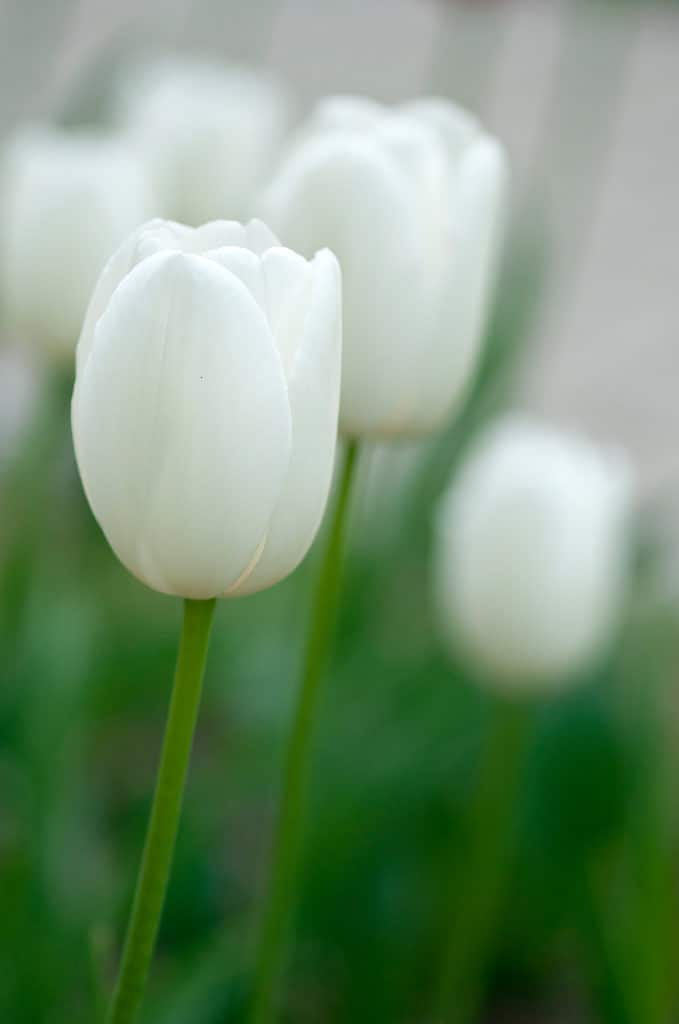
Bright white Maureen tulips in bloom.
©Liviu Gherman/Shutterstock.com
2. Menton Tulip
Menton tulips feature egg-shaped blooms with a yellow base and an orangish interior with white stripes. The blooms are a rosy pink but, depending on the day, and the level of sunlight, can also take on hues of apricot/salmon with hints of violet.
If you have both sunny and shady spots in your garden, it’s possible that you could feature two distinct colors by planting this one tulip. No wonder this color-shifting tulip is the star of many spring gardens!

Pink Menton tulips blooming in a garden.
©Nanzyprom/Shutterstock.com
3. Queen of Night Tulip
It’s easy to see how this tulip cultivar earned its name. With its deep purple, almost black color, it is among the darkest tulips ever bred.
The actual shades of the bloom depend on the amount of light. Bright sunshine brings out the mahogany and dark maroon hues. In the shade, the blooms can appear pure black.

Dark purple Queen of Night tulips in bloom.
©Printemps PhotoArt/Shutterstock.com
4. Hocus Pocus Tulip
Hocus Pocus tulips aren’t actually magic, but they could look magical in your springtime flowerbeds. They feature large, lily-like blooms in a spectacular bright yellow color with red flame-like accents.
One of the most heat-tolerant tulips on the market, some experts claim the Hocus Pocus tulip is rated for growing in zones as high as Zone 9. So growers in New Orleans should definitely get to know this tulip.
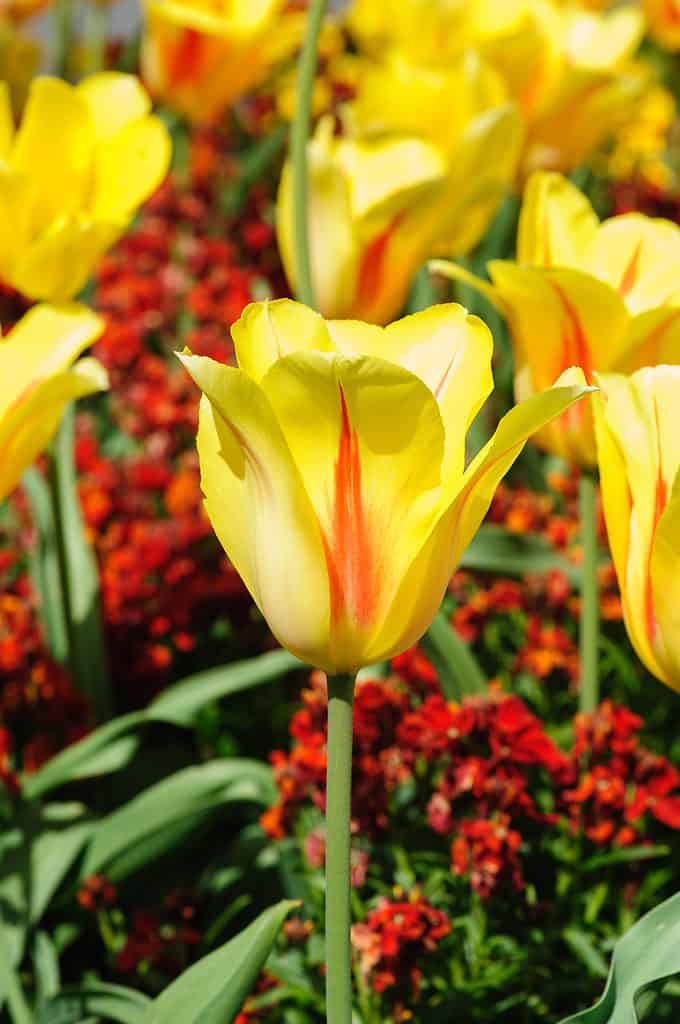
Yellow and red-accented Hocus Pocus tulips in a garden.
©CTatiana/Shutterstock.com
Planting Tips
These four tulips certainly don’t comprise an exhaustive list of options for Louisiana growers. Still, they are all able to better withstand the harsher growing conditions of the southern United States compared to many other types and varieties. All are recommended for growing up to Zone 8, with the Hocus Pocus sometimes recommended as high as Zone 9.
But Louisiana’s hardiness zones go up to Zone 10a. So let’s talk about how tulip growers can tackle that challenge.
Bulb Selection
It all begins with selecting the right bulbs for fall planting. Planting substandard bulbs will yield substandard results. Remember that, along with the embryonic flower, all the nutrients for the plant are stored in the bulb. These flowers will be growing in less-than-ideal tulip conditions in Louisiana, so they need every nutrient they can possibly get.
Avoid bulbs that are soft and squishy or that display mold or some other discoloration. Healthy tulip bulbs are beige-white with a papery outer jacket. And larger bulbs have stored more nutrients, so go big.
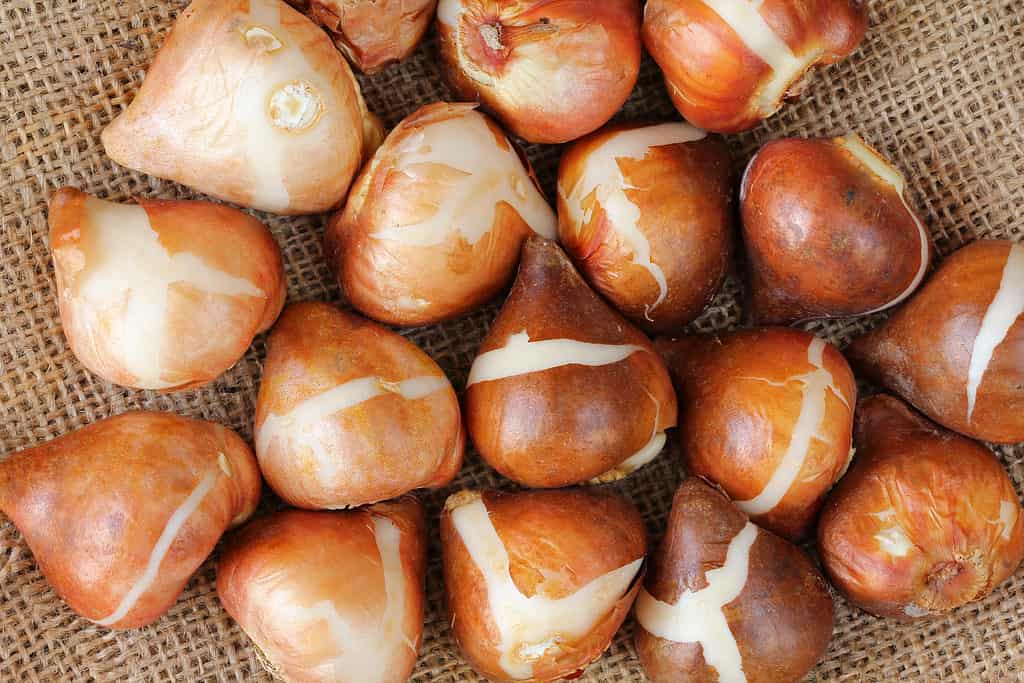
Firm bulbs of Menton single late Tulips with light brown papery skin.
©sasimoto/Shutterstock.com
When to Plant
The timing for bulb planting is all about the zone where you reside.
Tulip bulbs require a cold stratification period to emerge from dormancy. Without these extended cold conditions, the flowers will either be malformed or not grow.
It’s not hard to see why that’s a problem for growers in states like Louisiana. The ideal time to plant bulbs is when the soil temperature is below 55°FUnfortunately, much of Louisianan soil will never get that cool; if it does, it won’t stay that cool for long. So what do you do? You “trick” the bulbs.
Chilling Tulip Bulbs
In warmer hardiness zones, growers must chill tulip bulbs in a refrigerator before planting. The refrigeration causes a biochemical reaction in the bulb that would happen naturally underground in cooler climates. The bulb “wakes up,” and the growth process begins.
It is recommended to chill bulbs for 10-14 weeks before planting. You can refrigerate them longer than that without any problems, but don’t cut the time short. It will stunt or stop the processes that are happening inside the bulb. The end result could be small, malformed tulips, with an even greater possibility of no tulips at all.
When chilling tulip bulbs in the fridge, make sure that air can circulate freely. Don’t store the bulbs in an airtight container. Instead, refrigerate them in an open box or ventilated bag. If the bulbs don’t receive adequate air circulation, they will hold too much moisture and are likely to rot.
Also, remove all fruit from the refrigerator before chilling the bulbs. Fruit emits ethylene gas during the ripening process, and that gas is very harmful to tulip bulbs.
How do you know if you have to chill tulip bulbs before planting? Well, if you live in Louisiana, you do. It’s really that simple. Chilling tulip bulbs before planting is recommended for growers in Zones 8 and above, and that includes every single gardener in the Pelican State. If you want a display of spring tulips, you will have to give those bulbs lots of chill time in your refrigerator during the fall.
After the bulbs have chilled for the needed time, they are ready to be planted. Louisiana growers should plan to plant tulip bulbs in late December or early January.
Where to Plant
Choose a spot where your tulips can soak up some sun. In the ultra-warm zones of Louisiana, some shade from the harsh midday sun is a good idea. Also, make sure the site has good drainage so the tulips won’t get waterlogged.
Adding some fertilizer will give the flowers more nutrients, which is especially helpful for the conditions in which they will be growing. A slow-release fertilizer with a nutrient ratio of 9-9-6 is ideal.
If you’d rather use an organic mix, you can use equal parts greensand, bone meal, and blood meal.
Plant the bulbs, pointed side up, about 8-10 inches deep, and spaced 3-4 inches apart.
Perennials?
As you plan your planting, here’s one more factor to consider. Tulips will not perennialize well, if at all, in the hardiness zones of Louisiana.
Yes, they are classified as perennials, but they are somewhat finicky, even under ideal conditions. Since the southern United States area is far from ideal tulip conditions, it’s best not even to try to grow tulips as perennials.
When the growing season ends, dig up the flowers and plant new bulbs in the fall (after chilling them, of course).
Toxicity
Tulip bulbs contain alkaloid and glycoside compounds that are mildly toxic to humans and moderately toxic to pets.
Gardening gloves are highly recommended when handling bulbs or blooms to prevent “tulip fingers,” a skin rash well-known and much-despised by those who tend tulips.
Common Pests
As with most flowers, there are some pests that can damage your tulips.
Aphids and Spider Mites
These pests present problems every spring for tulip growers all over the United States.
If you find aphids or spider mites on your tulips (check the underside of the leaves), spraying insecticidal soap on the flowers can help eliminate them. However, if that fails to fully eradicate the pests, a chemical insecticide could be used.
Wildlife Problems
Wildlife can be an even bigger threat to your tulip garden than insects and arachnids. Lots of animals love to eat tulip bulbs, leaves, and flowers.
The Eastern Gray Squirrel is a common sight in Louisiana, and these rodents will dig up freshly planted tulip bulbs. Planting at a deeper depth, as recommended above, can deter them.
Rabbits can also be a headache for growers. They love to munch on new tulip shoots as they emerge from the ground.
Louisiana also boasts an abundant whitetail deer population. Tulips are like candy to deer.
If rabbits and/or deer are a problem, you can use a commercial repellent to keep them away. It may not stop them completely, but it could slow them down a good bit.
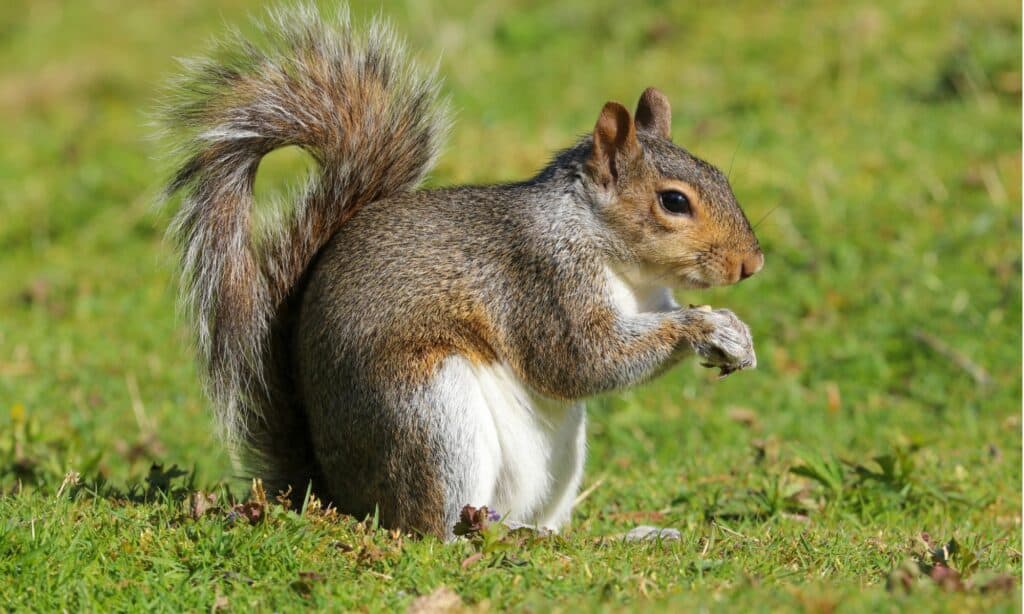
Eastern Gray Squirrel.
©iStock.com/Helen Davies
Final Thoughts
Growing tulips in Louisiana may not be the easiest gardening project you’ve ever taken on, but it’s not impossible. You need a game plan that includes choosing the right types of tulips, chilling the bulbs adequately, and then planting them in a way to give them the best chance of success. But when you have a stunning spring garden of tulips, you’ll be glad you put in the extra effort!
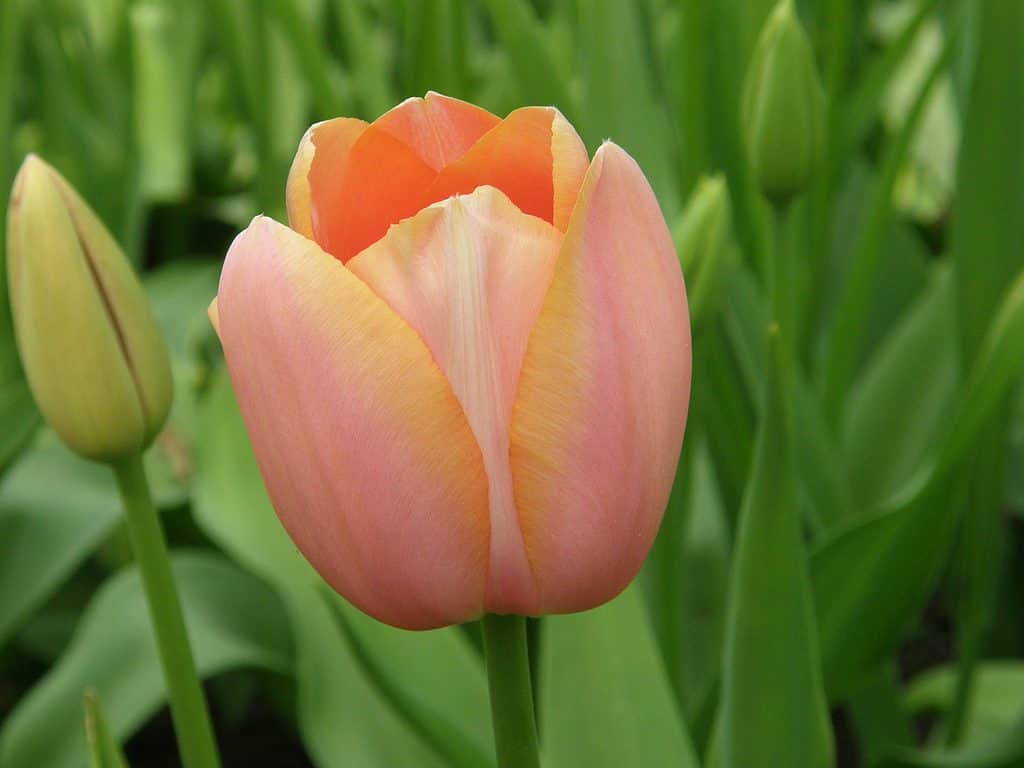
Apricot-pink Single Late Menton tulip in bloom.
©Sergey V Kalyakin/Shutterstock.com
The photo featured at the top of this post is © imageBROKER.com/Shutterstock.com
Thank you for reading! Have some feedback for us? Contact the AZ Animals editorial team.






